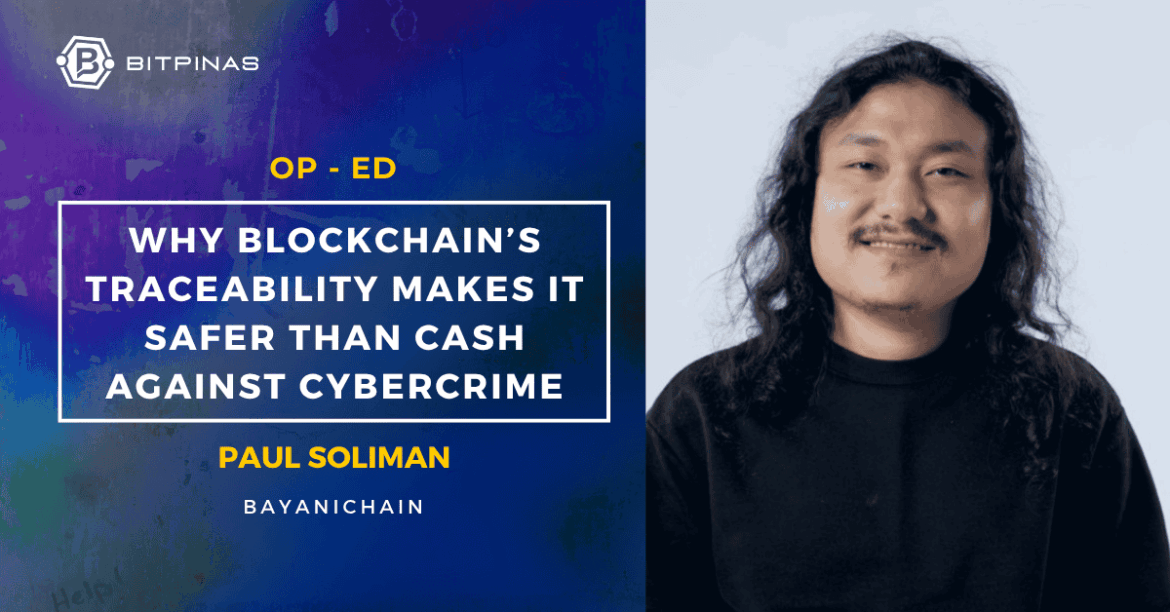Blockchain Is Not the Enemy
The Balance Between Enabler and Solution—Why Traceability Makes It Stronger Than Cash
Paul Soliman is the Paul Soliman is the Founder and CEO/CTO of Hacktiv Colab Inc. and Chairman and Group CEO of BayaniChain, where he leads initiatives in blockchain, enterprise tech, and digital nation-building. He also serves as CTO of Blockfy, driving innovation in decentralized finance solutions in the Philippines.
It began with Silk Road the infamous darknet marketplace that operated from 2011 to 2013, allowing users to buy illicit goods using Bitcoin. What made it revolutionary also made it dangerous: pseudonymity, speed, and decentralization. When its founder Ross Ulbricht was arrested and the platform seized, over 9M+ BTC (based on 2013 prices) had already passed through the site now worth billions. The world saw what crypto could do and criminals took note.
Fast forward to today: cybercrime is projected to cost $10.5 trillion annually by 2025, according to Cybersecurity Ventures, making it the third largest economy in the world if ranked by GDP.
And cryptocurrency is central to this rise powering ransomware payments, money laundering, darknet markets, and online fraud.
But here’s the paradox: while crypto is used in cybercrime, it also offers a level of traceability that cash never could.
The Anson Que Case: Crypto in a Kidnap-for-Ransom Operation
In 2025, the Anson Que kidnapping case shocked the Philippine public—not just because of the brazen nature of the crime, but also because it revealed how crypto infrastructure was used to launder ransom payments. Que, a businessman from Zamboanga, was kidnapped and later found dead. Investigators discovered that the perpetrators funneled ransom money through registered Virtual Asset Service Providers (VASPs) to obscure the origin of the funds.
According to a BitPinas report, authorities traced the movement of the ransom through licensed crypto exchanges, raising serious concerns about how registered platforms are being used for money laundering, even in violent crimes like kidnapping.
Despite regulatory requirements such as Know-Your-Customer (KYC) and Anti-Money Laundering (AML) protocols, the suspects were able to convert and move the funds across multiple wallets and platforms, highlighting major compliance enforcement gaps in the local crypto ecosystem.
This case is a wake-up call for Philippine regulators, law enforcement, and VASPs. It emphasizes the need for real-time transaction monitoring, stronger enforcement of suspicious transaction reporting, and tighter collaboration between crypto companies and government agencies. More importantly, it illustrates that crypto traceability is only as strong as the systems that monitor it.
Blockchain: Enabler or Best Defense?
Here’s what most don’t realize: blockchain is not anonymous it is pseudonymous.
Every crypto transaction is permanently recorded on a public ledger, timestamped and visible to anyone with a blockchain explorer. This level of transparency is unmatched by physical cash, which leaves no forensic trail.
Global authorities are catching on. In 2021, the U.S. Department of Justice recovered $2.3 million in Bitcoin from the Colonial Pipeline ransomware attack by tracing wallet movement across the blockchain.
In the Philippines, BSP Circular No. 1108 mandates registration and KYC compliance for all Virtual Asset Service Providers (VASPs). This gives local law enforcement a legal pathway to identify wallet owners through partner exchanges.
Tools like Chainalysis is now used to trace blockchain movement and flag high risk addresses. The Philippine National Police’s Anti Cybercrime Group has also begun adopting these tools to support investigations.
Reframing the Narrative
Yes, crypto is used in cybercrime. But so are phones, social media, and email. The difference is: blockchain can fight back.
From smart contract based anti-fraud systems to tokenized government compliance, blockchain is increasingly being applied as a defensive infrastructure.
Philippine startups and tech groups are already building solutions using blockchain for identity verification, budget transparency, and fraud prevention. Some are even integrating zero knowledge proof technology to balance privacy and transparency.
It’s Not the Tool. It’s the Intent.
Blockchain is not the enemy.
It’s a tool. One that can be abused by bad actors or wielded responsibly by governments, businesses, and communities. Unlike cash, it leaves a trail. Unlike traditional systems, it’s programmable and decentralized. In the hands of the right people, it’s not a loophole it’s a fortress.
If cybercrime is a trillion dollar threat, then blockchain might just be the trillion dollar defense.
Sources: (Cyber Security Ventures, CNN, BitPinas, US Department of Justice)
This article is published on BitPinas: Op-Ed: Why Blockchain’s Traceability Makes It Safer Than Cash Against Cybercrime
What else is happening in Crypto Philippines and beyond?

